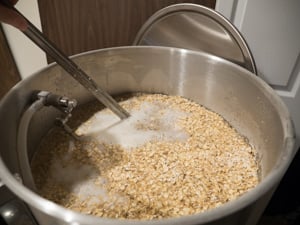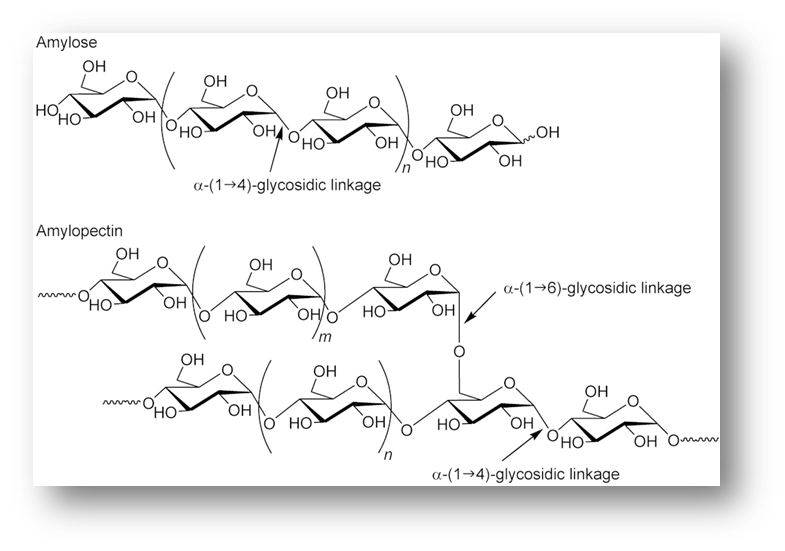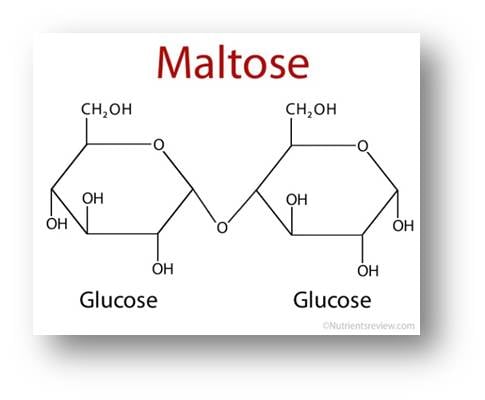
This week I take a look at major enzymes in the mash and how you can leverage these using various mash temperature strategies for beer brewing.
Chemistry of the Mash
The mash process in beer brewing is done primarily to break down longer starch changes present in barley grains into simpler sugars like glucose and maltose that can be fermented by yeast.
For barley malt, there are two major malt starches that need to be broken down. The first is amylose, and the second is called amylopectin. These are both composed of long chains of sugars, and neither one is fermentable in its raw form.

Src: https://chemistry.stackexchange.com/questions/58080/bonding-between-amylopectin-and-amylose
Fortunately malted barley, particularly pale malt is packed with natural enzymes that can break these long sugar chains into much shorter fermentables. The two major enzymes in malt are alpha amylase and beta amylase.
Alpha amylase has high concentration in pale malt and even higher for six row barley varieties. It chops starch molecules randomly into longer glucose chains. In particular it will break the 1-4 bonds (shown above) in both amylose and amylopectins. Alpha amylase reaches peak activity at a higher temperature of around 70 C (158 F) in the mash, and a pH of between 5.3-5.7.
The other major enzyme is beta amylase. Beta amylase is the main producer of fermentable sugars. It chops individual maltose molecules from the non-reducing end of both amylose and amlypectin starches. It also limits dextrines by breaking the alpha 1-6 bond in amylopectin which reduces the body of the finished beer. Beta amylase has peak activity at a temperature of 60-65 C (140-149 F) and a lower pH range of 5.1-5.3.
Though both enzymes have an optimal temperature range, they are also active outside of those temperature ranges which is why we still get fermentable sugars even if we are outside the ideal ranges for alpha or beta amylase.

Mash Temperature and pH Strategies
So now that we understand the major enzymes active for mashing, lets look at some approaches for varying both mash temperature and pH to create a desired effect in the finished beer:
- Full Body Mash 70 C (156-158 F) and 5.3-5.6 pH – A full body mash exploits the peak alpha amylase range by hitting its sweet spot. This leaves a higher percentage of dextrins and longer starch chains and less fermentables. This gives lower attenuation and a higher final gravity for a fuller bodied beer for something like a stout or porter.
- Light Body Mash 60-65 C (140-149 F) and 5.1-5.3 pH – This optimizes the activity of beta amylase, which will result in shorter sugar chains that are highly fermentable and fewer unfermentable dextrins. This gives you a high yeast attenuation rate and lower final gravity for the beer. This will give a light refreshing body for lagers and other lighter beers.
- Medium Body Mash 67 C (153 F) and 5.2-5.5 pH – At this temperature both alpha and beta amylase will be active to a moderate degree, producing a medium body beer with plenty of fermentables but also some dextrins.
- Lager Style Mash – Steps at both 63 C (145 F) and 70 C (159 F) with 5.2-5.5 pH – This is a two step mash profile that hits both the low and high end of the typical sugar conversion range. By activating both the alpha and beta amylase in their optimal ranges, this type of profile generally results in even lighter bodied beer than the light bodied mash above. It is often used for light body lagers for this reason. It is also used in many German lager styles to enhance the slighly malty but clean finish in the beer.
By adjusting both the mash temperature and pH of the mash as described above you can gain more control over the body and character of your finished beer.
Thanks for joining me on the BeerSmith Home Brewing Blog. Be sure to sign up for my newsletter or my podcast (also on itunes…and youtube) for more great tips on homebrewing.
Im sure people have already pointed it out, but I think your spell/grammar checker has modified “starch chains” in the sentence “longer start changes present”.
Keep up the awesome work mate.
Daniel
Brad, I am starting back brewing after a 10 year hiatus now that I am retired and have the time to do it right, brewing and quaffing. BeerSmith has been a real treasure find in my process of getting all the facts, ideas and new information fresh in my head. Thanks for all the work developing the tool. I read a lot and have been translating what I read into settings and steps in BeerSmith. While assembling a syllabus prior to my first session I discovered your Support and Blog resources. I should not have been surprised I suppose. The collection of interviews, expositions of BeerSmith capabilities and reference materials has been valuable as I prepare for the first batch from Fort Robert Brewery v2.0. Finding all this info coming from the BeerSmith perspective is time saving and adds great value to the small investment.
Thanks again
Rob
From what I’ve read, neither beta amylase nor alpha amylase are able to break 1-6 amylopectin side-chain bonds to any significant degree. As you correctly state, the beta form can break off glucose molecules from the end of amylopectin and amylose chains, while alpha amylase can break the 1-4 bonds along a chain. In order to break the 1-6 side-chain bonds you need the glucoamylase enzyme, which is not normally present in malted grain but can be found on sale in some home brew shops. I have some sachets myself. It is particularly useful in the preparation of fermentables for spirit distilling, in order to produce the biggest yield of alcohol. Glucoamylase has never been particularly popular in traditional beer brewing, as it produces a thinner tasting beer, unless more caramelized malts are added to the mash to avoid too low a final gravity. However, recently there has been a surge of interest in ‘brut’ beers with a very high attenuation and very dry finish.
See: https://www.phadebas.com/technical-info/amylase/
Pingback: Water to Grain Ratios for the Mash in Beer Brewing – BeerSmith™ Home Brewing Blog